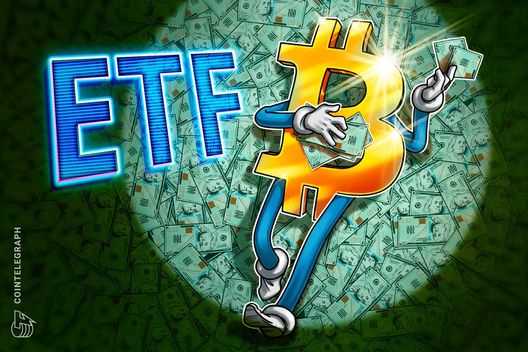XRP experienced a notable dip of nearly 4% on Tuesday as institutional selling pressures emerged during mid-day trading. This downturn forced the cryptocurrency to break below the significant resistance level of $2.99, marking a crucial point in its market performance. The trading volume surged to an alarming seven times the daily average, highlighting significant liquidation flows. Price stabilization was only seen after reaching the support level of $2.878, raising questions about the asset’s resilience.
Amid the fluctuating market conditions, traders are closely monitoring the critical $2.85 to $2.87 support band ahead of Ripple’s impending review for a U.S. banking charter, with the deadline set for October 7. This regulatory scrutiny underscores the challenges faced by Ripple as it seeks to solidify its standing in an increasingly competitive landscape. The global macroeconomic environment also remains a concern, with ongoing trade disputes and differing central bank policies contributing to liquidity challenges for both foreign exchange and cryptocurrency markets, particularly affecting enterprise-focused tokens like XRP.
“A significant rise in Binance custody reserves, approximately 19% over the past week, points to distribution pressures, despite some signs of whale accumulation on-chain.”
In terms of recent price action, XRP has faced resistance at the $2.993 mark, confirmed as a firm ceiling after multiple failed attempts on high trading volumes. The most substantial declines occurred between 13:00 and 15:00 UTC, witnessing a staggering volume of 586.9 million as prices plummeted to $2.878. This price fluctuation over a 24-hour span was notably wider than in recent sessions, indicating the fragility of the current order books.
While the last hour of trading saw a slight rebound from $2.858 to $2.881 (+0.8%), suggesting a potential short-term stabilization, the overall broader market setup remains delicate. Traders are keenly focused on whether XRP can maintain the $2.85–$2.87 support or if it will continue to decline toward the $2.70 level. Additionally, they are observing the implications of Ripple’s charter decision on U.S. regulatory trends and whether Bitcoin’s potential breakout to $125,000 will affect altcoin performance, including XRP.

XRP Market Analysis
Key Points:
- Price Decline: XRP fell nearly 4%, breaking down from the $2.99 resistance zone.
- Volume Surge: A volume spike, nearly seven times the daily average, confirmed significant selling activity.
- Support Level: Price stabilized around the $2.878 support, critical for price retention.
- Regulatory Scrutiny: Ripple’s effort for a U.S. national banking charter faces regulatory examination, with a key deadline on October 7.
- Market Influences: Ongoing global macroeconomic issues and diverging central bank policies impact liquidity in crypto markets.
- Trading Dynamics: On Binance, custody reserves increased by ~19%, indicating ongoing distribution pressure and whale accumulation.
- Resistance and Support Levels:
- Resistance remains firm between $2.99 and $3.00.
- A crucial support band is noted at $2.85–$2.87, below which a decline toward $2.70 may occur.
- Market Sentiment: Traders remain cautious, monitoring Ripple’s OCC charter decision and Bitcoin’s movements, which could influence XRP’s trajectory.
XRP Market Movements: A Critical Overview of Recent Trends
The recent decline of XRP, witnessing a near 4% drop in a single session, has brought significant scrutiny to its market behavior, mirroring trends seen across the cryptocurrency landscape. While institutional selling and a notable volume spike led to a breakdown from a resolute resistance zone, comparable altcoins are navigating similar turbulence, albeit with varying degrees of volatility and institutional interest.
Competitive Advantages: XRP’s recent price action reveals a resilient support level around $2.878, which could potentially serve as a stabilizing factor for traders amidst an increasingly bearish sentiment. Additionally, Ripple’s ongoing push for a U.S. national banking charter positions it uniquely within the regulatory landscape, offering it a competitive edge over other cryptocurrencies that lack such institutional aspirations. The accumulation of custody reserves on platforms like Binance further highlights a nuanced market interaction, where institutional players are balancing distribution with accumulation, creating an interesting dynamic that can sustain XRP’s overall market presence.
Disadvantages: Despite these advantages, the looming scrutiny from regulators surrounding Ripple’s OCC charter and the overarching global macroeconomic factors present substantial hurdles. The current international trade disputes and divergent monetary policies exert ongoing pressure on cryptocurrency liquidity, further contributing to XRP’s volatility. This unstable environment may deter potential investors seeking safety, pushing them towards rival cryptocurrencies that boast clearer regulatory paths and a more stable macroeconomic backdrop.
Who Could Benefit or Face Challenges: Investors and traders focusing on XRP may find opportunities for short-term gains, especially if the crucial $2.85–$2.87 support band holds. However, this fragile position can create challenges, particularly for those relying on Ripple’s charter as a catalyst for growth. On the flip side, altcoin traders could feel the impact of XRP’s technical movements, especially if Bitcoin’s anticipated breakout influences market sentiment across the board. The ongoing volatility may also create issues for retail investors attempting to navigate this fast-paced environment, as market sentiments can swing dramatically based on regulatory news or macroeconomic shifts.

















